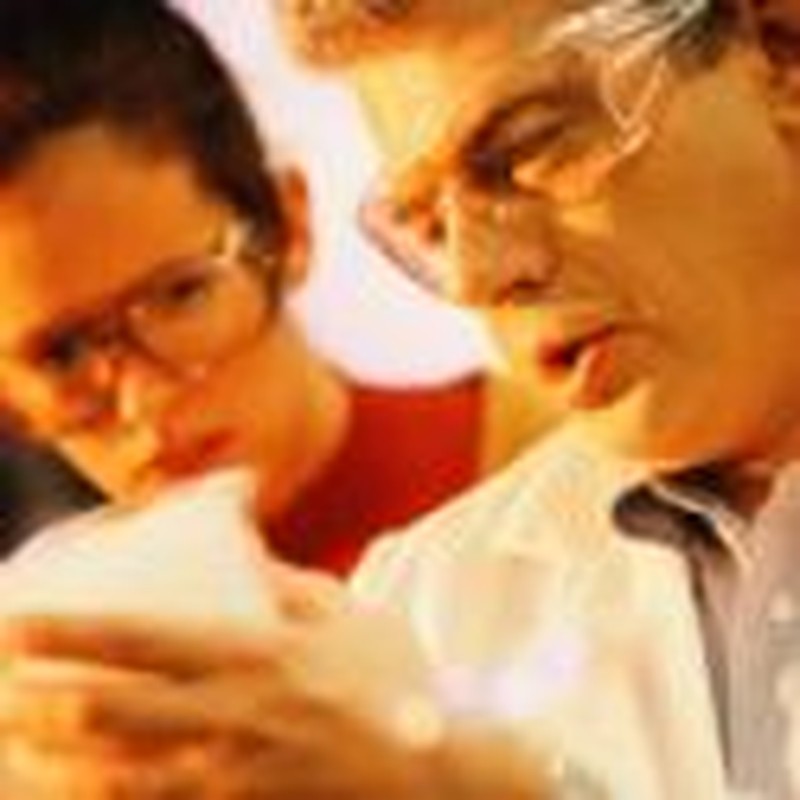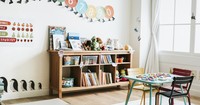Science in the Kitchen – The Scientific Method
- Susan K. Stewart Contributing Writer
- Published Jan 28, 2008

We stood in the laundry room looking up at the spider’s web. Mother spider was in the center. Radiating out from her seat were black dots on the spokes of the web. We hadn’t seen dots on a web before so my son climbed up for closer inspection. When he reached for one of the dots, all of them converged toward the center, mother. Those weren’t dots; they were babies. With this living laboratory, a new science lesson and laboratory experience began.
Few things strike more fear in the heart of home educating moms (and sometimes dad) than laboratory science. Colleges want to see lab work included with science coursework. Dissecting rubbery earthworms has almost become a right of passage. But most of us still have lingering memories of black-topped tables and smelly rooms of high school science labs, not to mention the geeky science club kids.
After the novelty of watching the spider family wore off, the study commenced. Using the scientific method, we were able to set in motion a series of lessons and lab experiences.
Scientists develop most experiments around the scientific method of inquiry. It is the foundation of “real” lab experiments. Even if you are following a science textbook, the scientific method is a useful outline for helping your student to create experiments and studies of interesting topics.
This method begins by stating a problem/purpose/question. Usually in question form, the statement asks why, what if, or how. “Why is a spider web shaped like a wagon wheel?” “What if I mix oil, water, and vinegar?” “How can I get a bundle of shingles on the roof easily?”
Collecting information, or research, is the next step. Gaining background about the question will help your student design a meaningful experiment. The research doesn’t have to be from a book. You can interview people, like a roofer to get an idea about moving shingles or go to the natural history museum to view the arachnid exhibit.
Now your student is ready to develop a hypothesis. A hypothesis is merely an educated guess based on the research. It is coming up with an answer to the original problem or question. To begin the development of a hypothesis, ask the question “What do you think will happen if …?” The answer to this question is the hypothesis on which to build and experiment. For our spider web study it might be “What will happen if I weave a mat using the spider web design?” The answer or hypothesis could be “It will be stronger than a straight woven mat.”
Now the fun begins, design and conduct an experiment to test the hypothesis. The experiment can be doing something (mixing the oil, water, and vinegar), observing conditions (where is the spider web located, how many babies are there, are more eggs seen), making comparisons, or building models (if your student is testing the design of a bridge, a popsicle stick model will work quite well). Your student then records the findings of the experiment.
Finally, draw a conclusion. What happened and why? Was the hypothesis correct? If not, did something go wrong with experiment or do you need to form another theory? An incorrect hypothesis doesn’t mean a failed experiment. When the experiment doesn’t go as planned, make adjustments and try again. The conclusion can often lead to a new question or a new hypothesis that goes on to another experiment; thus the scientific process starts over.
Recording research and observations during the process is important. These details will help your student know where to make changes if the experiment doesn’t work as expected.
Let’s go back to our spider family. A number of questions came up that led to research: Why are there so many babies? Where is the daddy spider? How did the mother manage to hide all her babies? Finally, “Why is the web shaped like a wagon wheel?” That question is the one that led to a science experiment that involved laws of physics as well as biology, not to mention a brief look at geometry.
As we studied the shape of spider webs, we also learned about the material (silk) spiders use and the uses man makes of the silk. When the research was done, experiments followed. The experiments included looking at different spider webs around the house (observation) and making a web of different materials and designs (models). Each design and type of material was tested for strength and durability (experiment).
I’ve never seen a lab of this kind in a textbook. Nor, do I think my children would have been as excited about learning the ins and outs of spider webs if it had been a typical science lab assignment. By using the scientific method, almost any question can become a science lesson that includes a lab experiment.
Although lab sciences can be a challenge when teaching high school at home, by shedding memories and rethinking science you can conquer the challenge.
Susan K. Stewart is the author of Science in the Kitchen, Fearless Science for All Ages. She presents workshops on teaching science at home including high school lab sciences. Susan and her husband Bob began teaching their three children in 1981 graduating all of them from home school. She can be reached at susan@skstewart.com or visit her web site www.skstewart.com.




















